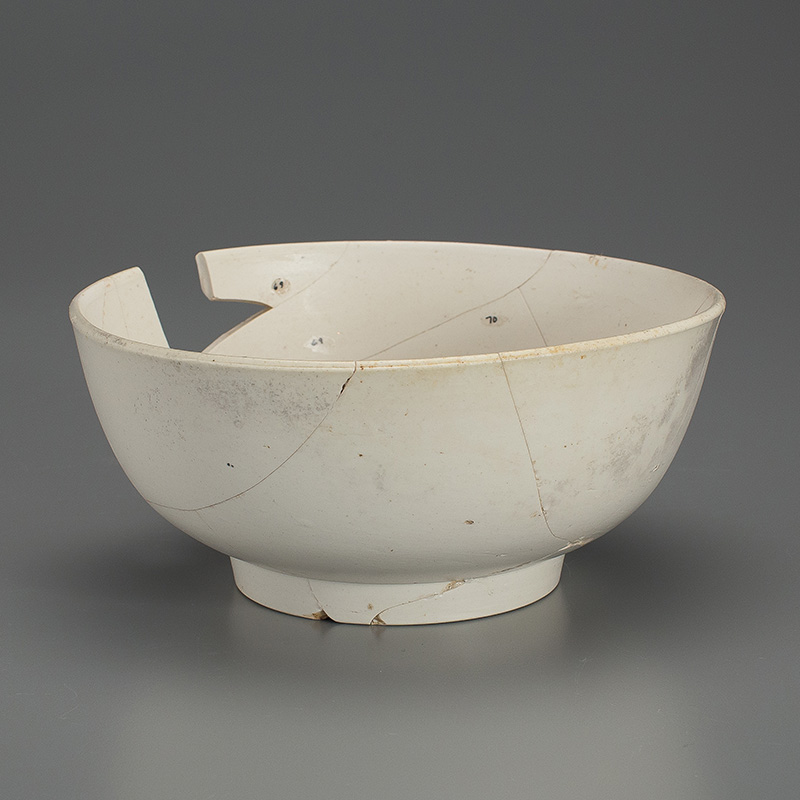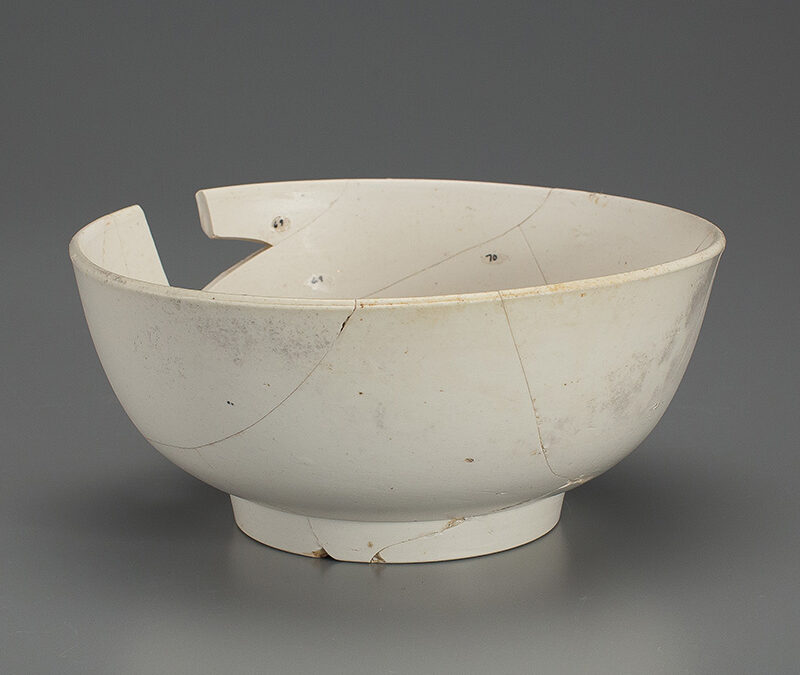
| Maker | Attributed to the American China Manufactory (Gousse Bonnin and George Anthony Morris) |
| Date of Creation | c. 1772 |
| Location | Philadelphia, Pennsylvania |
| Materials | Hard-paste Porcelain |
| Institution | Museum of the American Revolution |
| Credit Line | N/A |
| Accession Number | 2017.07.02.01 |
| Photo Credit | Robert Hunter |
As Americans struggled to defend their rights and liberties within the British Empire in the 1760s and 1770s, they began to boycott the purchase of imported goods—including tea, glass, textiles, and ceramics—to protest British policies. American-made items served as substitutes, and patriotic citizens called for their countrymen to improve domestic manufacturing and agricultural production. This undecorated ceramic punch bowl from Philadelphia is part of that story. Found by archaeologists in 2014 at the site of what is now the Museum of the American Revolution, this bowl is the earliest known example of American-made hard-paste porcelain, a fashionable, translucent, and difficult-to-produce ceramic desired by European and American consumers in the 1700s. Archaeologists uncovered the fragments of the broken bowl (which they later reassembled) in a late-18th century privy pit near the southeast corner of Third Street and Chestnut Street in the heart of historic Philadelphia. Based on scientific analysis, which confirmed its material to be hard-paste porcelain, this bowl is thought to be one of the experimental products made in Philadelphia by the American China Manufactory in 1772. Gousse Bonnin and George Anthony Morris, the owners of the American China Manufactory (established in 1770), hoped to sell their porcelain as an alternative to wares imported from China and Europe. In 1772, Bonnin and Morris experimented with clay brought to Philadelphia by Henry Laurens of South Carolina and created true hard-paste porcelain. Bonnin and Morris, however, struggled to compete with cheaper imports. The American China Manufactory ceased operations in 1773, which meant that its production was limited. Americans hoped that the economic pressures of the boycotts, and other forms of protest, would force Britain to alter its policies toward the colonies. The British responded by continuing to enforce customs duties and by increasing the presence of British soldiers in America. In 1775, the Revolutionary War began.

